
585%
Increase in Sales Opportunities

1,012%
Increase in No. of Customers Won

$2.9M
Increase in Revenue
About Imperva
Imperva Incapsula is a cloud-based service that makes websites safer, faster and more reliable. Their mission is to provide every website, regardless of its size, with enterprise-grade security and performance features that so far have only been affordable to the largest of companies.
Services Provided
- Google Paid Search and Retargeting Campaign Management
- Landing Page Development and Conversion Optimization
- LinkedIn Campaign Management
- Facebook Campaign Management
- Display Ad Campaign Management
- Inbound Marketing and Content Marketing

SevenAtoms has helped us get excellent ROI from our paid campaigns. Their understanding of B2B SaaS and Cyber Security has really shown up in the engaging content and landing pages they have developed for us. They continue to crush it across all our campaigns!
 Tim Matthews
Tim MatthewsVP of Marketing

The Challenge
Incapsula had been running pay per click campaigns for a few years, but while they were getting conversions and generating leads at a good clip, most leads were of low quality and were not turning into sales opportunities, let alone customers. They had run campaigns both in-house as well worked with a couple of leading agencies but they still had negative ROI. They had just about given up on running paid campaigns on Google when they first approached us.
In addition, they wanted to produce high quality blog and ebook content related to cyber security topics. They had limited in-house resources and so were looking for an agency that had prior experience in SaaS or website security. They also wanted to explore platforms such as LinkedIn for targeted lead generation.
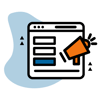
The Solutions
After a deep-dive analysis of their account and leads, we came up with a seven step plan of action. This included restructuring their paid search campaigns so that they had a more targeted and granular campaign structure; creating better quality landing pages, ad creatives and content assets in order to attract high quality leads; using localized campaigns to accelerate lead generation in selected non-English speaking countries; running A/B tests extensively and adjusting campaigns on an ongoing basis; and scaling Incapsula’s paid marketing efforts by expanding campaign types and using additional channels.
Restructuring Paid Search Campaigns
Our goal was to have a structure in place that would give us the most control over the campaign as possible. In particular, we wanted to ensure that we had a precise message match between keywords and ads, as well as between ads and landing pages. This would lead to high quality scores and click-through rates, while keeping keyword cost per click at a reasonable level — even for the top ad slots.
In order to run a highly targeted campaign, we made sure that our keyword selection was spot-on. We started by picking only the most relevant keywords from Incapsula’s old campaigns. We poured through the search terms reports and extracted some excellent keywords as well as a host of negative keywords. We also used “spy” tools to look at which keywords competitors were using, and then extracted some of those as well. Finally, using keywords tools, we identified new opportunities including niche keywords and long tail keywords that were being ignored by competitors.
Next, we created a new campaign structure in which the keywords accounting for around 90% of the expected campaign traffic were placed in Single Keyword Ad Groups (SKAGs) – an approach where we use only one keyword per ad group (and thus one for each ad copy). While this turned out to be an extremely time consuming affair, we knew from past experience that the effort would be well worth it.
We rewrote all of the ad copy and came up with two ads for each ad group in the campaign. We then added all possible ad extensions to the ads to make Incapsula’s ads more prominent in search results and expand the amount of screen space our ads would take up.
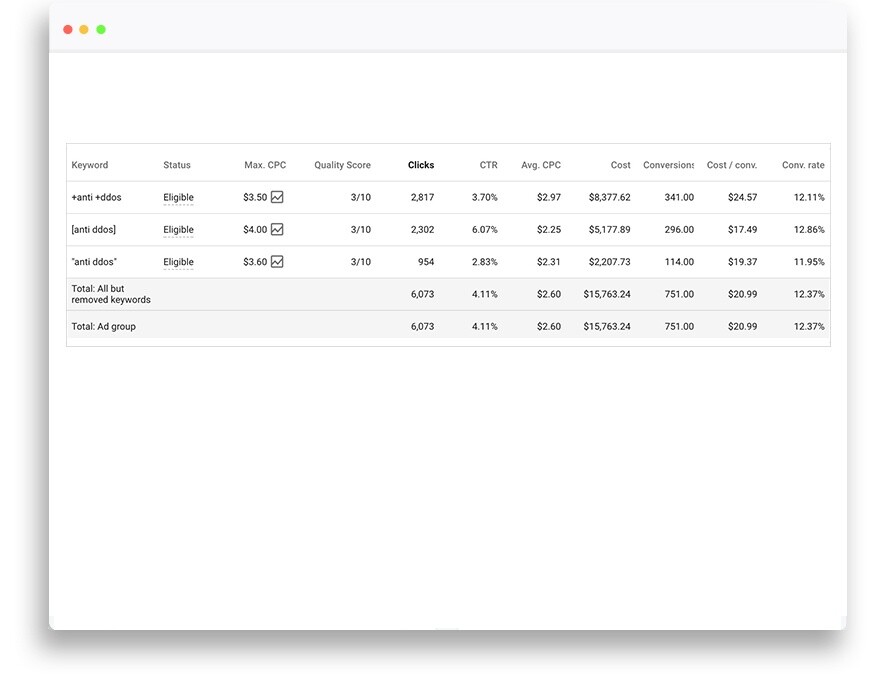
Conversion Optimized Landing Pages With Full Campaign Tracking
The old campaigns relied on only 2-3 landing pages and used website pages for several portions of the campaign. This made it impossible to present targeted content to users. Moreover, the old landing pages had average design and were not optimized for conversions.
We created around a dozen new landing pages – each with content customized to the target audience. We made the headlines and other important parts of the content dynamic so that they would include keywords and match up more precisely with the ad copy triggering those landing pages. We made the design modern, intuitive and optimized for generating leads.
In order to get end-to-end campaign attribution, we first made sure that the landing pages could process key parameters (campaign name, keyword, device, etc.) that we were passing in the ad URLs. The other aspect, and something that proved to be a little challenging at first, was to integrate the landing pages seamlessly with Incapsula’s Marketo and Salesforce accounts. We made sure that all form fields, as well as tracking parameters, were properly stored in associated lead records in Marketo and Salesforce. This ensured that we could get full post-conversions attribution including tracking of lead status (MQL, SQL, etc.), sales opportunity, opportunity amount, and account won/lost status.
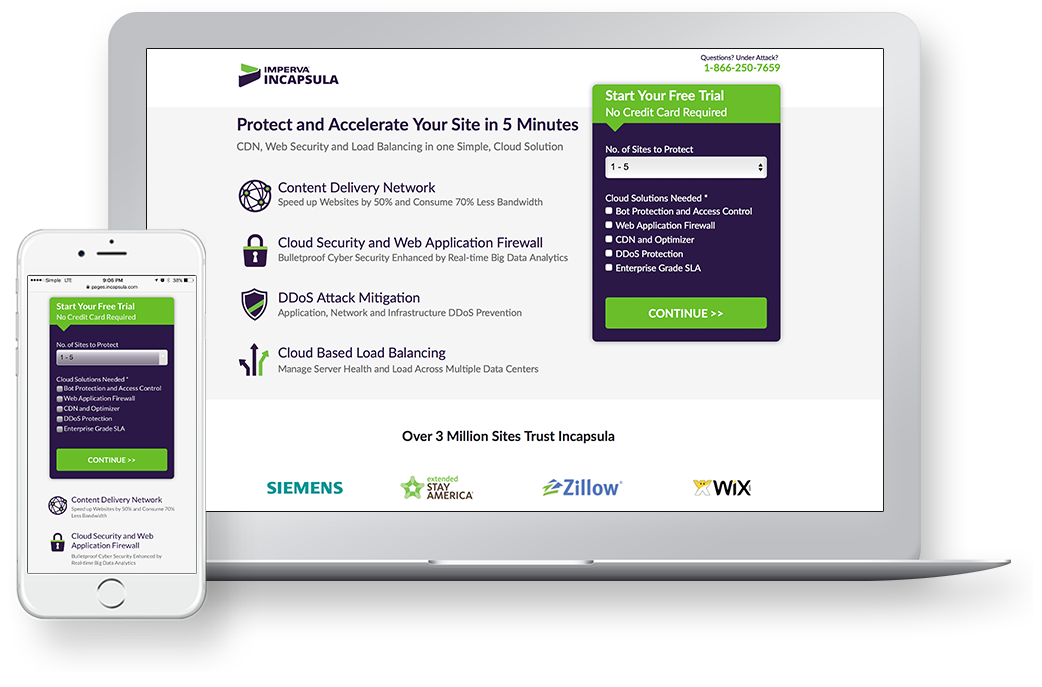
Segmented Retargeting Campaigns
Most enterprise level campaigns need multiple touch points before a conversion can occur. This is why retargeting can play a significant role in generating leads. However, Incapsula did not have much success with their previous retargeting efforts because of low quality creatives, poor landing pages, and campaigns that were not targeted properly.
We first devised a segmented retargeting strategy where we isolated groups of users who had engaged with specific pages of the site. Based on this we identified targeted offers that would make a good “next step” for those users. We then created high quality creatives, both in terms of design as well as messaging, and associated landing pages optimized for these offers. We also made sure that a given user did not see the same ads over and over again by using multiple creatives and limiting the frequency of impressions.

High Quality Content
Incapsula had a limited number of downloadable content offers. To supplement that and to ensure we had a targeted offer available for each type of audience, we created several new eBooks and guides on current cyber security topics. We also created landing pages for these assets.
Our content team first spent time researching the underlying topics. We then studied content that Incapsula had produced in the past and also went through content published by competitors and industry experts. We then worked closely with Incapsula’s team to develop and fine-tune the content.
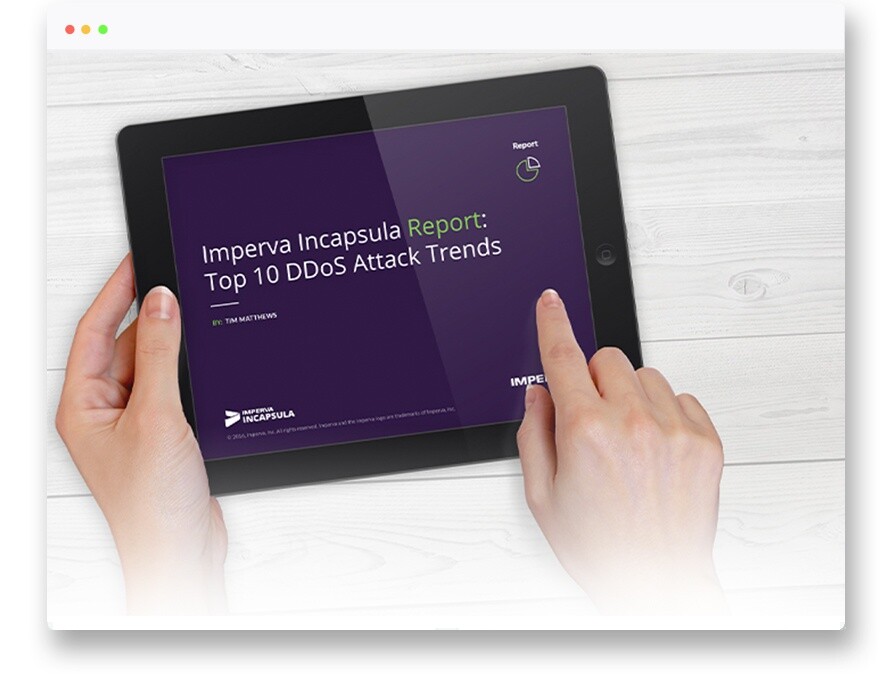
Localized Campaigns
Incapsula’s European campaigns had performed better mainly because the competition, and thus the cost of buying keywords, was much lower than in the US. However we felt that a more customized approach was needed for certain non-English speaking countries and started by developing campaigns in German and Spanish. The Spanish campaign would have a much wider reach because we could target Spain as well as Latin American countries.
We conducted keyword research to identify German and Spanish keywords that had good search volume. With the help of a translator, we then proceeded to create ad copy and landing pages in the associated languages.
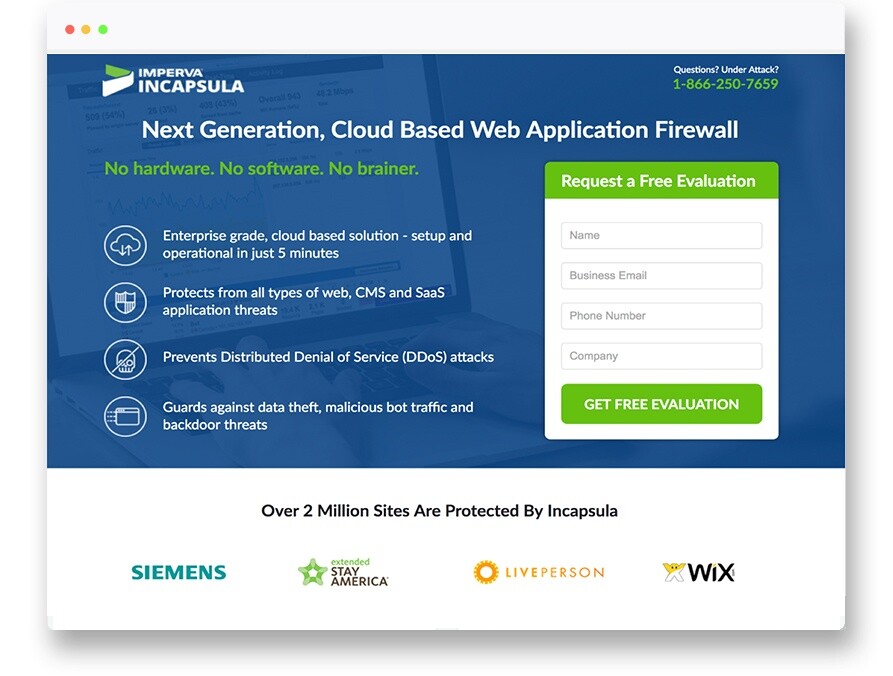
A/B Testing and Constant Optimization
Once we launched our campaigns and had enough performance data, we started a regular schedule of on-going optimization and A/B testing. We had a fixed optimization routine consisting of optimizing keyword bids, updating daily budgets, monitoring actual search terms and adding/removing keywords and negative keywords based on those and adjusting target parameters based on numerous segments such as time, geography, income, device etc.
A/B testing played a huge part in our optimization efforts. We set up and conducted A/B tests across most of our ads and landing pages. For ads, we tested headlines, ad copy and creatives. For landing pages, we tested headlines, call-to-actions, form fields and design. Once we found a variant that worked significantly better, we paused the other variant and set up a new one in its place to continue this process of driving constant improvement.

Expanding to other channels
To scale up the campaigns, we worked on several other channels outside Google.
The most notable of these were:
- LinkedIn, where we set up campaigns using the same content assets we developed for other campaigns.
- Display advertising, where we set up placement + keyword targeting and like audiences for Google campaigns as well as worked directly with publishers outside the Google Display Network (GDN).
- Quora, where we devised a single target ad set process similar to our granular single keyword ad groups in AdWords.

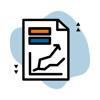
The Results
We found significant success in each of the seven areas we sought out to improve and were able to meet, and exceed, all of our goals. Incapsula’s paid ad campaigns went from being unpredictable and in the red, to being predictable and ROI positive. Because of our efforts to ensure end-to-end tracking and attribution of all key metrics, we were able to accurately measure and report on every single aspect of the campaigns. We were able get insights into all of the bottom-line data that actually mattered and make informed decisions to drive continuous campaign growth.
Our key accomplishments compared with the previous paid campaigns included:
- 610% increase in the number of Marketing Qualified Leads (MQLs)
- 585% increase in the number of Sales Opportunities in the pipeline
- 1,012% increase in the number of customers won
- $2.9 Million additional revenue generated from the customers won – a whopping 38x increase compared to the previous campaigns
- $8.3 Million in additional opportunity amount compared to previous campaigns
Additionally, we saw immediate success with some of our new campaigns:
- Our Quora campaigns produced higher quality leads than Google and other paid channels, generating MQLs at a cost that was 53% lower
- The localized German campaign produced conversions at a 3.5x better rate compared to its English counterpart
- The localized Spanish campaign produced conversions at a 12x better rate in Spain and a 24x better rate in Latin America
Trusted By














